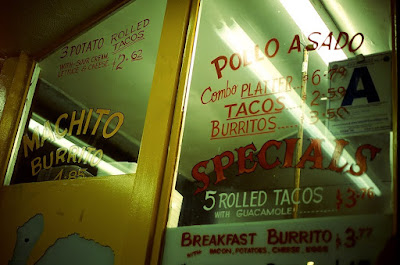






robert irwin
recently, we made a trip to visit influential teacher, theoretician and conditional artist robert irwin, a seminal figure of the light and space movement, and a giant of the american art scene.
having abandoned studio practice for 30 years, he had now turned the gallery into a studio, using quint contemporary art gallery in la jolla, san diego, as a workshop for a number of new site-conditioned pieces. these installed works in progress were revisited over the course of the exhibition — up until the very end — with irwin coming and going during the day, making judgments, adjustments, and otherwise discussing the pieces with patrons. a pretty incredible process to witness.
i was first introduced to bob irwin's work at the pace gallery in 2009, and then through lawrence weschler's seminal biography, 'seeing is forgetting the name of the thing one sees'. containing the wealth of 30 years of interviews, the book tracks irwin's development from average LA kid to abstract expressionist painter at ferus gallery, to 'sculptor', installation artist, getty central garden and DIA : beacon designer — site-conditioned artist. it's an infinitely compelling read, and so clearly tracks a trajectory of thought and action, is really required reading for anyone interested in art, theory, and perception. 'this is a simple, infinitely complex and completely remarkable world,' irwin seems to rediscover and restate:
"Sitting there in the Whitney's coffee shop, Irwin pointed through the glass wall up at the play of shadows on a building facade across the street. "That the light strikes a certain wall at a particular time of day in a particular way and it's beautiful," he commented, "that, as far as I'm concerned, now fits all my criteria for art." At the terminus of Irwin's trajectory, when all the nonessentials had been stripped away, came the core assertion that aesthetic perception itself was the pure subject of art. Art existed not in objects but in a way of seeing."
this sounds simple enough - that beautiful things are beautiful, that seeing them is the thing - but by the time you reach this paragraph, 190 pages into the book, you've come to an incredibly layered, rich understanding of this 'way of seeing,' as something intensely pure, pristine and ecstatic; completely accessible, but a powerful human freedom often unconsciously passed over. it's a quiet, ego-less vision; a rare and incredible thing in this world.
wonder
robert irwin's art is about perceiving ourselves perceiving — the process of creation, the insight gleaned from just being attentive. this idea is far reaching and links everything from finding the sun spot on the couch, to realizing the thing you love about the thing you're drawing; walking down a familiar street and suddenly seeing it with new eyes, watching a movie and realizing, while experiencing it, that you're being moved; talking to your mom and simultaneously realizing your closeness and your distance; noticing a kid play hide and seek with a dachshund. this is the attendance of ray and charle's eames, of robert henri, tino sehgal, olafur eliasson, and yes, disney's nine old men, who, with honesty and wonder, studied the beauty of simple motion and emotion and in it found the tremendous complexity of life. isn't that wonderful? isn't that enough?
"Malevich, of course, back around 1915 pared everything down to those empty white squares on their white ground. Everybody looked at those and moaned, 'Oh no, everything we love is gone.' And instead he replied, 'Ah, but we have found a desert of pure feeling!'—an incredibly philosophical thing to say. One could have easily equated those empty squares with the loss of God, the end of culture, the horror of death, and there's a whole artistic tradition that, in effect, does that: the existentialist tradition. But I'm convinced that Malevich was drawing on the opposite tradition: the phenomenological. Instead of angst, he's telling you, 'Wonder! Wow! A desert of pure feeling!' And he's not talking about emotion—or anyway, not just about emotion. He's talking about texture, about experience, about quality, about taking the feel of things."
the show at quint was intimate: there were four pieces in the gallery, all composed of florescent light bulbs and colored gels — the simplest of tools from which mr. irwin derived the most remarkable combinations, changing as switches were flicked and, just as joseph albers demonstrated with his studies on the temporality of color perception, allowing new, remarkable life to spring from what your mind had fixed in place. the whole thing was wonderful and its implications were great, for wasn't this phenomena visible at any flashing neon sign? at any place with changing light? wasn't this beauty available to us everywhere, every day? so then we went to the beach.
"What I'm saying is, God, it's all already out there...
Turning people on to the world, in this view, means turning them on to the single most beautiful thing in the world: the human capacity, the human responsibility, for perception."
please click here to see a lecture by robert irwin \\\\\\\\\\
to learn more about the show at quint contemporary \\\\\\\\\\
and to read seeing is forgetting \\\\\\\\\\





























